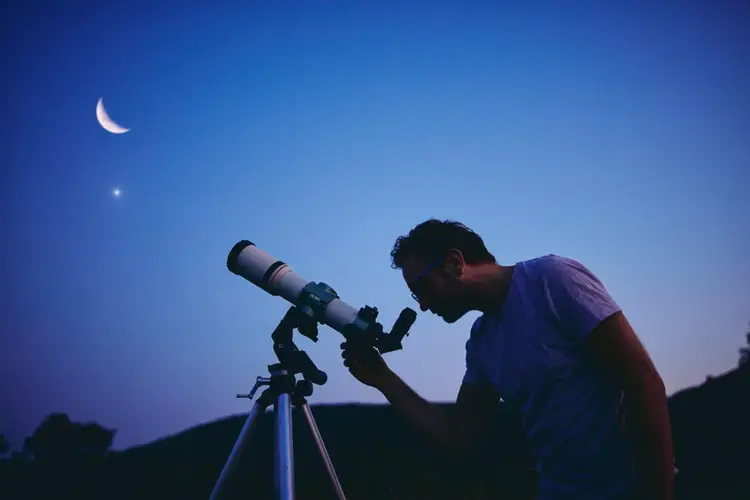Almost everyone will stop and stare at the stars, and while some will simply walk on by, others will take their interest a little further. If you’re one of those folks, buying a telescope probably seems like the next logical step. If you’re about to buy your first telescope, there are some important things you should know.
Maybe you’ve never used a telescope before or maybe you’ve had a glimpse through someone else’s and now you want one of your own. Or maybe you’ve got a young astronomer in your family and you want to help them to explore the universe around them. Whatever the situation, there’s a scope out there for everyone – but where do you begin? What should you know before you buy?
- What to Know Before You Buy Your First Telescope: Beware of Inferior Brands
- Aperture is Everything
- Which Type of Scope is Best For You?
- Make It Easy on Yourself
- Let the Telescope Take You There
- Making the Right Choice
What to Know Before You Buy Your First Telescope: Beware of Inferior Brands
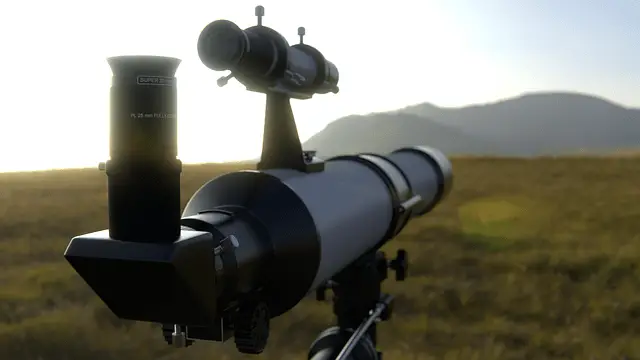
The most important thing to do when you buy your first telescope is to stick to a recognized name brand. You probably wouldn’t buy a car from a company you’ve never heard of that’s promising to deliver speeds of up to 1,000 mph, so stay away from telescopes that make similar claims. Anything you see in the store that boasts a magnification of anything more than 200x is probably inferior and should be avoided.
The best known brands are Celestron, Orion, Meade and Zhumell, with Celestron being the world’s leading manufacturer of telescopes and astronomical equipment.1 Each of these manufacturers produces quality equipment and any one of them is a great place to start.
Aperture is Everything
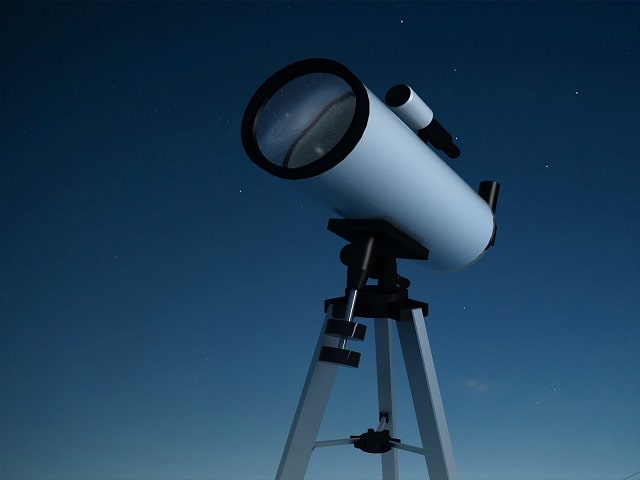
The aperture of a scope is the diameter of its primary lens or mirror (more about that in a moment).2 The larger the aperture, the more light it can gather. The more light it can gather, the fainter the object it can detect and the more detail you’ll be able to see.
There are no set size standards, but generally speaking, small scope apertures tend to range in size from about 60mm to 100mm (roughly 2½ to 4 inches) and mid-size scopes have apertures of up to about 250mm (roughly 10 inches).3
Realistically, the minimum usable aperture is 70mm, as anything smaller than that isn’t really capable of producing a quality image at medium to high magnifications. On the other end of the scale, most amateur scopes have apertures maxing out at about 500mm, or 20 inches.
Obviously then, you’ll want more aperture, but there’s a trade-off. Not surprisingly, a larger aperture means both a physically larger and heavier scope and a larger price tag. Therefore, it’s also important to consider your budget and portability needs when selecting a scope.
Fortunately, most scopes can usually be relatively easily transported (either outside to your backyard or to a dark location), and many small scopes will cost less than $200.
Which Type of Scope is Best For You?
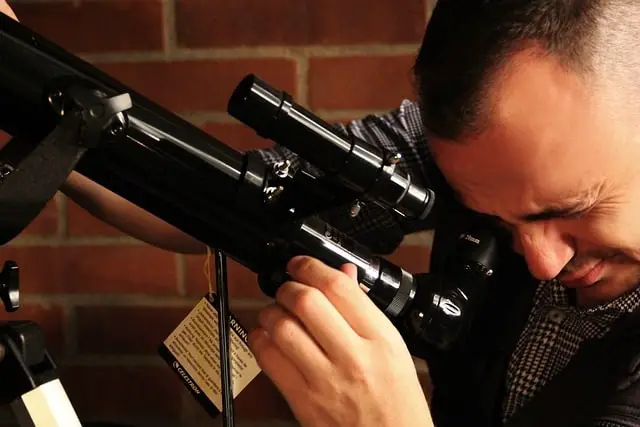
In essence, there are three types of scope: refractors, reflectors and catadioptrics, and while the names might sound a little daunting, the principles are simple enough.4
A refractor is what many would consider a traditional telescope.5 It consists of a long optical tube, with light entering through a lens at the large end that points towards the sky. It then travels the length of the tube until it reaches the eyepiece and the observer’s eye at the bottom of the tube.
On a practical level, refractors tend to have small apertures as the larger the aperture, the longer the optical tube that’s required to bring the image into focus. As a result, most refractors are typically under 130mm in aperture.
Reflectors, on the other hand, use mirrors to bounce the light through the optical tube to the eyepiece.6 Light enters the tube through the open end that faces the sky. It then hits the primary mirror at the bottom of the tube and is reflected back until it strikes a much smaller, secondary mirror. This secondary mirror is angled so that it then bounces the light out of the tube via the eyepiece.
The advantage of a reflector is that it allows you to have a much larger aperture without the need for an impractically long optical tube. Since a larger aperture means more light, reflectors are typically better suited to observing fainter objects, such as distant galaxies. Refractors are best suited to observing the Moon and planets since these are much brighter and don’t require as much aperture.
The third type, compound (or catadioptric) scopes, are a hybrid of refractors and reflectors.7 Light first enters the optical tube through a correcting lens, which helps to improve the quality of the image the observer will eventually see. It’s then reflected by the primary mirror at the bottom of the optical tube and travels back along the tube to the secondary. The secondary then reflects the light out of the tube via the eyepiece.
Like a regular reflector, compound scopes are more compact and more portable than their refractor cousins.
Essentially, it doesn’t really matter if you choose a refractor, reflector, or compound when you buy your first telescope, as they’re all more than up to the task at hand. However, if you’re thinking of transporting the scope to a dark location on a regular basis (for example, on a camping trip) you’ll probably find a reflector or compound to be the most portable.
Make It Easy on Yourself

There’s one other factor to take into account; its ease of use. This is heavily dependent on the mount you choose and it really boils down to two types: alt-azimuth and equatorial.8
An alt-azimuth (or altaz) mount is a simple mount that moves in a basic up-down (altitude) and left-right (azimuth) motion.9 The scope is typically mounted to its base on a fork that allows smooth movement in both the horizontal and vertical axes.
One very popular form of alt-azimuth mount is the Dobsonian.10 Compatible with reflector telescopes, this type of mount is a favorite among amateur telescope makers and allows the scope to be easily picked up and transported. The scope still essentially sits on a fork mount, but instead of a tripod, the scope has a flat base that sits directly on the ground. This makes it an excellent choice for reflectors with a long optical tube, as it places the eyepiece nearer to the observer’s eye level.
The other type of mount, the equatorial, is a little more complicated.11 The Moon, stars, and planets all rise and set at an angle. Since an alt-azimuth mount moves horizontally and vertically, this angle is ignored. This means that as your target moves across the sky you’ll need to adjust the scope both vertically and horizontally to continue to track it.
An equatorial mount solves this by tilting the telescope to match the angle of your target as it rises and sets. When you move your scope to the left or right, the tilt and angle are maintained, making it easier to keep your target in view.
The downside? Equatorial mounts can both tricky to set up (sometimes requiring counter-weights) and confusing for beginners to use, making alt-azimuth mounts a better choice for your first scope.
Let the Telescope Take You There

There’s one other option if you’re potentially looking something easy to use: computerized, or “GoTo” scopes.12 These can be a refractor, reflector, or compound scope and can have either an alt-azimuth or equatorial mount. They’re motorized, so they can track your target as it appears to move across the sky, but perhaps most importantly, they also have a database containing thousands of potential targets.
With a computerized scope, all you need to do is select the object you wish to view and the scope will “go to” that object – hence the name. It sounds great, but there is, of course, a catch. While you don’t need to know the stars to set the scope up, you won’t get much enjoyment unless you know what to look for.
Most of the time, the scope will get you close to the target, but the chances are it’ll be a little off. You’ll then need to manually move the scope to get it centered correctly. This is fine if you know what you’re looking for, but if you’re unfamiliar with your target, this can be both challenging and frustrating!
With that in mind, regardless of the scope you choose, it’s always wise to buy a few books that can help you to identify the best of the night sky sights. That way you’ll be much better prepared to begin your adventures in astronomy – and you’ll be far less likely to lose interest, too.
Making the Right Choice
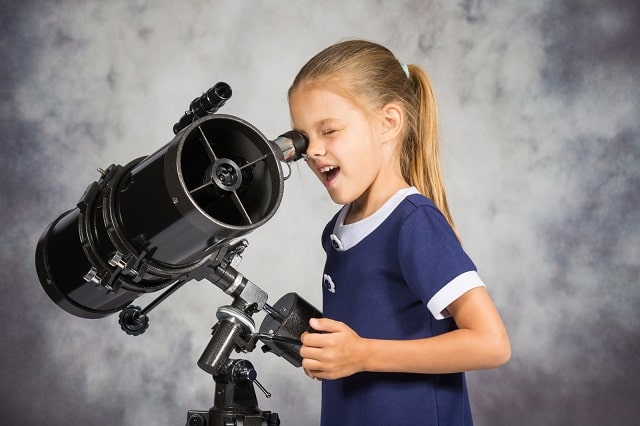
We’ve covered the basics, but there’s a lot of factors to consider, so ask yourself these questions when you’re about to buy your first telescope:
- Who will be using it?
- Where will it be used?
- How committed are you?
First, regarding the mount, it’s probably best to stick with an alt-azimuth mount for your first scope. That being said, it’ll be safe to assume that the options we’re discussing will all have that type of mount.
Next, let’s consider the user. If you’re buying for yourself, you’ll most likely be fine with either a refractor or reflector. If you’re buying for a child, you’ll need to take into account their age and height. Older children might be fine using any type of scope on a tripod or a reflector on a Dobsonian base, but younger, shorter children might do better with a Dobsonian reflector.
A Dobsonian will be lower to the ground, making it easier for smaller children to use (or at least make it easier for them to stand on a small stepstool to reach the eyepiece.) At the same time, a Dobsonian isn’t usually so close to the ground that an adult will find it uncomfortable either.
You can also buy a small, tabletop Dobsonian reflector that’s specifically designed for the younger astronomers in your family.13 The great thing about these is that they’re light and therefore highly portable, making it extremely easy to move from one location to another. As an added bonus, they’re usually fairly inexpensive, so if your child loses interest, you haven’t lost too much money in the process.
If you want to take your scope elsewhere, it’s best to stick with a relatively small aperture. A tripod-based scope is more portable as it can be relatively easily disassembled and the tripod collapsed and safely stowed for transportation.
A Dobsonian is a little less portable; you can remove the scope from the base, but due to the box-like nature of the base, these can be more cumbersome to transport. This makes the Dobsonian a great choice if you’re only moving it from inside your home to the backyard, but if you want to drive to a darker location it might be best to stick with a tripod-based scope.
The last thing to seriously consider is your commitment to the hobby. While buying a telescope isn’t quite like getting a new family pet, it’s not unusual for many folks to lose interest once the novelty wears off.
Some will only use it to look at the Moon, or maybe the planets, but it’s definitely worth learning more about the other wonders to be found in the night sky. As noted earlier, you might want to buy some books to give you ideas on what you can see (and how to find them!). One of the most popular is Turn Left at Orion by Guy Consolmagno and Don M. Davis, but it’s also worth joining a Facebook group and asking for other recommendations.
Regardless of the scope you eventually purchase, there are literally thousands of celestial objects waiting to be discovered.14 It doesn’t matter if you spend less than a hundred or more than a thousand, your investment is almost guaranteed to pay dividends in the years to come!
Additionally, if you’re looking for additional resources on stargazing, we have a number of articles that you might find interesting.
First off, we’ve created guides on a variety of astronomy related topics, such as our guide to determining the proper telescope cost, our guide to how to use telescopes, our astronomy for beginners guide, and our overview of how to buy your first telescope (which you’re reading now). We’ve also created a series of helpful guides for kids, such as our list of cool astronomy facts (which any kids or beginners will no doubt find interesting), and our kids astronomy guide.
We’ve also created a series of buying guides, including our guide to find the best astronomy tool for you, our guide to evaluating the best telescopes for beginners, and our guide to the best astronomy binoculars.
In addition to those guides, we’ve also created a series of in-depth reviews of a variety of telescopes and astronomy binoculars. You can check them out before you buy to find out the best accessories, pros and cons for different models, and even to see what they look like unboxed. If you’re considering buying a telescope we have a series of reviews that also serve as how to guides. You can get our series of guides to individual telescopes as well, including our review of the following telescopes and binoculars: our Celestron Firstscope, Celestron Travel Scope 80 Telescope, SkyGenius 10×50 Binoculars, Celestron Travel Scope 80 Telescope, Opticron Adventurer II 10×50 Binocular, Orion Astronomy 15×70 Binoculars, Orion XT6 Dobsonian Telescope, Orion Scenix 7×50 Binoculars, Celestron ExploraScope 114AZ Telescope, Zhumell Z100 Telescope, and our Sky-Watcher Heritage 130 Telescope, to really be able to dive into the different telescope and astronomy binocular models.
Article Sources
Moon and Back uses only high-quality sources, including peer-reviewed studies, to support the facts within our articles. Read our editorial process to learn more about how we fact-check and keep our content accurate, reliable, and trustworthy.
- Bakich M. Celestron celebrates 60 years of crafting telescopes. Astronomy.com. Published October 13, 2020. Accessed March 4, 2021.
- Urbain T. Telescope Aperture Explained. Starlust.org. Updated June 2, 2020. Accessed March 4, 2021.
- Bakich M. Telescopes 101. Astronomy.com. Published April 1, 2014. Accessed March 4, 2021.
- Anderson E. 3 Different Types of Telescopes Explained. Telescopicwatch.com. Accessed March 4, 2021.
- What is a Refractor Telescope the Answer. Telescopeschool.com. Accessed March 4, 2021.
- What is a Reflector Telescope the Answer. Telescopeschool.com. Accessed March 4, 2021.
- What is a Compound Telescope and is it Any Better? Telescopeschool.com. Accessed March 4, 2021.
- Gater W. Telescope Mounts: a beginner’s guide. Skyatnightmagazine.com. Published January 18, 2020. Accessed March 4, 2021.
- Money P. A beginner’s guide to altaz mounts. Skyatnightmagazine.com. Published October 25, 2018. Accessed March 4, 2021.
- Why are Dobsonian Telescopes a Favorite Among Amateur Astronomers? Universetoday.com. Published March 22, 2011. Accessed March 4, 2021.
- Vamplew A. Equatorial mounts: an astronomer’s guide. Skyatnightmagazine.com. Published July 7, 2017. Accessed March 4, 2021.
- Vaughan C. The Ultimate in Astronomy Gadgets: GOTO Telescopes. Space.com. Published July 29, 2016. Accessed March 4, 2021.
- Fuller D. A passionate defense of the tabletop reflector. Eyesonthesky.com. Published November 24, 2020. Accessed March 4, 2021.
- Raynor Evans K. Deep-sky astronomy: a beginner’s guide. Skyatnightmagazine.com. Published August 19, 2019. Accessed March 4, 2021.
